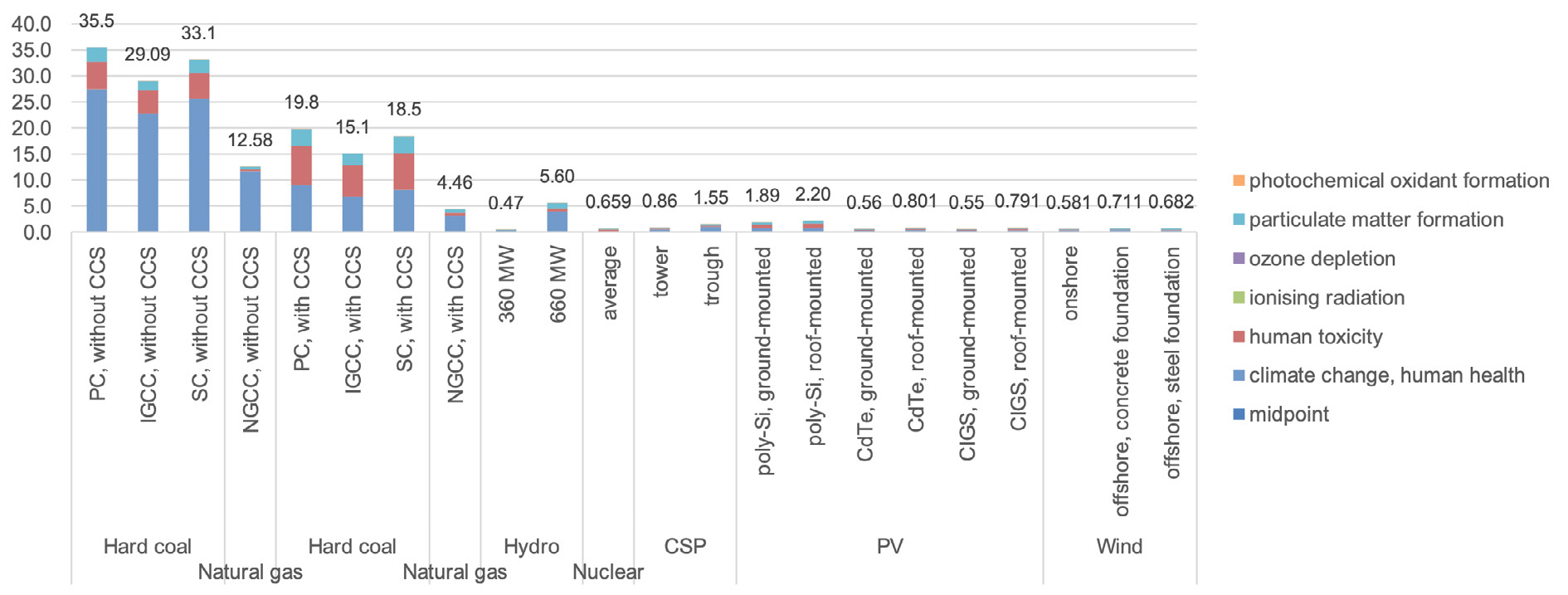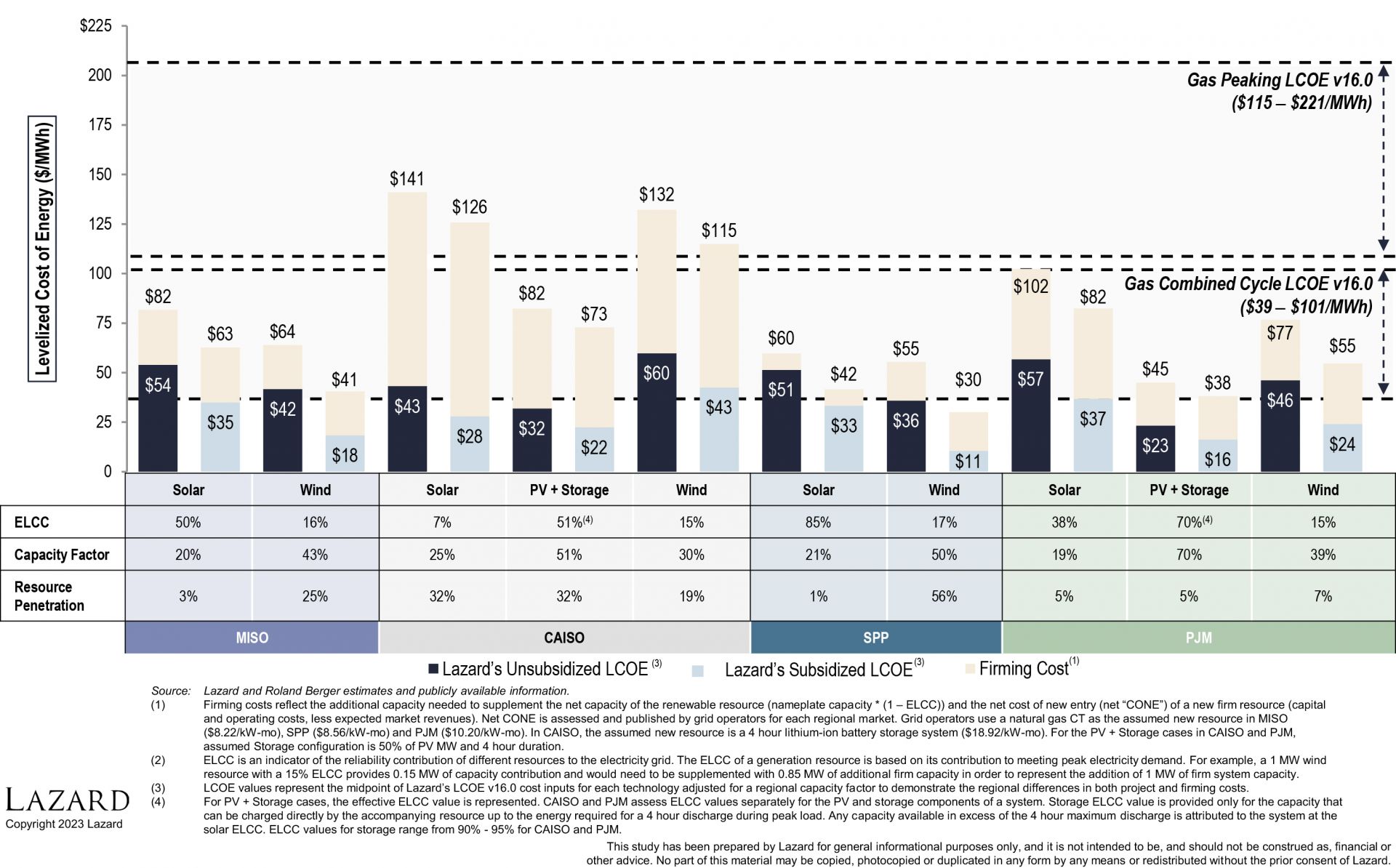There is no perfect technology—not one that doesn’t emit carbon or toxic chemicals or that doesn’t involve mining, water contamination, or land destruction at some point in its life cycle. Technologies vary wildly, and some are just better than others in one aspect or another. However, none beat nuclear when taken in totality.
Two figures from the UNECE report say it all, providing scores on coal, natural gas, hydro, nuclear, solar, and wind. Data come from 12 global regions to account for—or smooth out—the varying load factors, economies, and usage. I encourage you to peruse the report for yourself, but basically, for environmental impacts, one point is equivalent to the impacts (in species-years) of one person (globally) over one year. For human health, one point is equivalent to the impacts (in disability-adjusted life years) of one person (globally) over one year. The bigger the number, the bigger the negative impacts.

Life cycle impacts on ecosystems, in points, excluding climate change. (Source: UNECE, Life Cycle Assessment of Electricity Generation Options, November 2021; doi.org/10.13140/RG.2.2.24717.67048)

Life cycle impacts on human health, in points, including climate change. (Source: UNECE, Life Cycle Assessment of Electricity Generation Options)
It is obvious that nuclear takes the cake from all measures of human health and environment. What is interesting is the difference between small and large hydro with respect to climate change, that is, carbon emissions. The big dams have larger flooded areas behind the dams that produce a fair amount of methane and carbon dioxide. The effect is largest in humid regions, less so in arid ones. Otherwise, no surprises for us in the nuclear world; we’ve known nuclear is best for decades.
And don’t get me started on cost. This endless whining about nuclear being too costly, blah, blah, blah. When you include the externalities, things change dramatically. Take natural gas peaker plants in California. They idle all day, waiting for the sun to go down before exploding into action for a few hours to balance the grid. Their capacity factor averages less than 3. Who pays for this? It is never included in the cost of solar, even though it basically doubles solar’s cost. It’s similar for wind.
Financial services firm Lazard in 2023 put out an analysis of these costs for renewables showing that, yes, peaker plants basically double the cost of solar and wind, although the amount varies across the country as different regional transmission organizations balance their grids differently.

Levelized costs of renewable energy, adjusted for firming. (Source: Lazard’s Levelized Cost of Energy Analysis—Version 16.0, April 2023; lazard.com/media/typdgxmm/lazards-lcoeplus-april-2023.pdf)
And that’s just for firming, or load-following. All in, the costs for new natural gas, nuclear, wind, and solar are within a penny per kilowatt-hour of each other. Is that one cent too much to have a reliable, clean grid?
I think not.
My column “How to compare energy sources—Apples to apples” (Nuclear News, June 2023, p. 104) spells it out. Without including any externalities, the direct costs for producing 656 million megawatt-hours over the array’s, farm’s, or plant’s lifespans are shown in the table below.
Energy | Cost |
Coal | $32.0 billion |
Wind | $23.4 billion |
Nuclear | $22.0 billion |
Solar | $19.2 billion |
Gas | $18.6 billion |
Hydro | $15.2 billion |
If you include Lazard’s firming numbers, then wind and solar become the most expensive, followed by coal, nuclear, hydro, then gas.
So can we stop the whining and get on with it?
James Conca is a scientist in the field of earth and environmental sciences specializing in geologic disposal of nuclear waste, energy-related research, planetary surface processes, radiobiology and shielding for space colonies, and subsurface transport and environmental cleanup of heavy metals.








 rotated.jpg)





